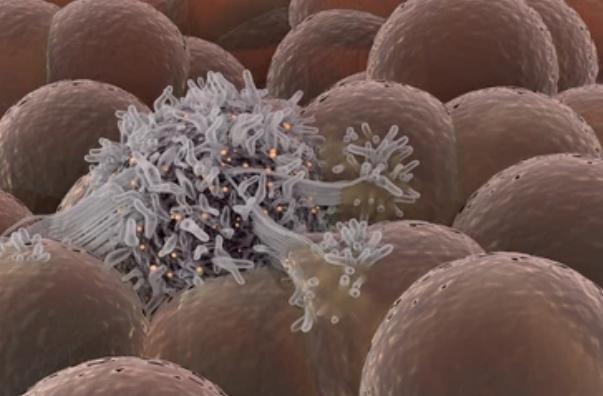Biomarkers and Signaling Pathways in Tumor Stem Cells

Among the many different types of cells within the tumor, there exists a subpopulation of cells called tumor stem cells (TSCs) that multiply indefinitely, are resistant to chemotherapy, and are thought to be responsible for relapse after therapy. Tumor stem cells also give rise to highly metastatic cells that spread to other organs and tissues within the body. Understanding the biological characteristics of TSCs, as well as identifying specific biomarkers and signaling pathways associated with their function, is essential for developing targeted therapies and improving patient outcomes.
Biological Characteristics of Tumor Stem Cells
- TSCs, also known as cancer stem cells, are a subpopulation of cells within a tumor that possess self-renewal capacity and the ability to differentiate into multiple cell lineages.
- TSCs have a strong self-renewal ability, which is the direct cause of tumorigenesis. TSCs can symmetrically divide into two TSCs or one TSC and one daughter cell. TSCs expand in a symmetrical splitting manner to excessively increase cell growth, ultimately leading to tumor formation. In addition to their self-renewal ability, TSCs also can differentiate into different cell types.
Biomarkers for Tumor Stem Cells in Solid Cancers
Identifying reliable biomarkers for TSCs is crucial for their isolation and targeted therapy development. In solid cancers, the clinical use of TSC-specific biomarkers is very limited, besides the use of the carcinoembryonic antigen (CAE), fragments of the cytokeratin 19 (YFRA 21-1) and the alpha-fetoprotein (AFP) that is expressed by tumor stem cells. The following is a summary of some of the TSC markers.
| Types of TSCs | Biomarkers |
| Lung TSCs | Surface markers: CD44, CD87, CD90, CD133, CD166, EpCAM. Intracellular markers: ALDH, Nanog, Oct-3/4. |
| Chronic myeloid leukemia TSCs | Surface markers: CD25, CD26, CD33, CD36, CD117, CD123, IL1RAP. Intracellular markers: JAK/STAT, Wnt/β-catenin, FOXO, Hedgehog/Smo/Gli2. |
| Breast TSCs | Surface markers: CD24, CD29, CD44, CD49f, CD61, CD70, CD90, CD133, CXCR4, EpCAM, ProC-R. Intracellular markers: ALDH, BMI-1, Nanog, Notch, Oct-3/4, Sox2. |
| Gastric TSCs | Surface markers: CD24, CD44, CD90, CD133, CXCR4, EpCAM, LGR5, LINGO2. Intracellular markers: ALDH, Letm1, Musashi2, Nanog, Oct-3/4, Sox2. |
| Liver TSCs | Surface markers: CD24, CD44, CD90, CD133, CXCR4, EpCAM, LGR5, LINGO2. Intracellular markers: ALDH, Letm1, Musashi2, Nanog, Oct-3/4, Sox2. |
Signaling Pathways in Tumor Stem Cells
- Wnt signaling pathway
The Wnt signaling pathway can be divided into canonical Wnt signaling and noncanonical Wnt signaling. The Wnt signaling pathway plays a critical role in TSC self-renewal, proliferation, and differentiation. Activation of Wnt signaling leads to the stabilization and nuclear translocation of β-catenin, which subsequently regulates the expression of key target genes involved in TSC maintenance. - Notch signaling pathway
The Notch signaling pathway consists of the Notch receptor, Notch ligand (DSL protein), CSL (CBF-1, suppressor of hairless, Lag), DNA-binding protein, other effectors, and Notch regulatory molecules. Many studies on the Notch pathway in TSCs have shown that activation of Notch promotes cell survival, self-renewal, and metastasis and inhibits apoptosis. - Hh signaling pathway
The Hh signaling pathway consists of ligands and receptors. Aberrant activation of Hh signaling has been implicated in the development of various cancers, including basal cell carcinoma and medulloblastoma. Amplified Hh signaling is important for the self-renewal, growth, and metastasis of TSCs. - NF-κB signaling pathway
Nuclear factor-κB (NF-κB), a rapidly inducible transcription factor, consists of five different proteins (p65, RelB, c-Rel, NF-κB1, and NF-κB2). The NF-κB signaling pathway is a key regulator of inflammation, immune responses, and cell survival. Activation of NF-κB signaling has been observed in various cancers and is associated with enhanced tumor growth, angiogenesis, and resistance to apoptosis.
Creative Bioarray Relevant Recommendations
Creative Bioarray offers a comprehensive range of tumor stem cells related to glioblastoma, brain cancer, breast cancer, colon cancer, gallbladder cancer, head and neck cancer, kidney cancer, leukemia cancer, liver cancer, lung cancer, and more.